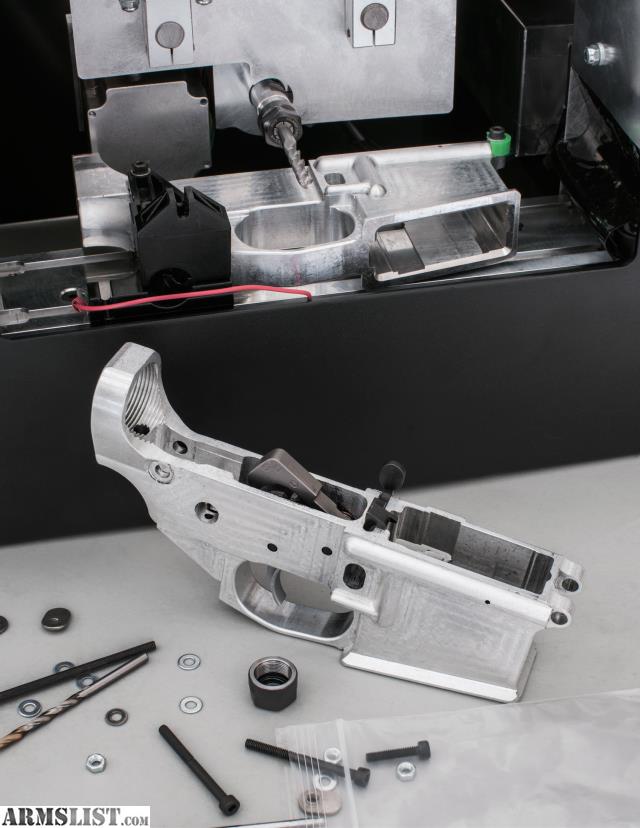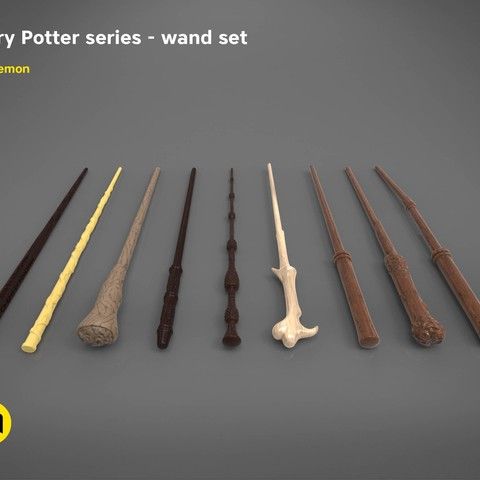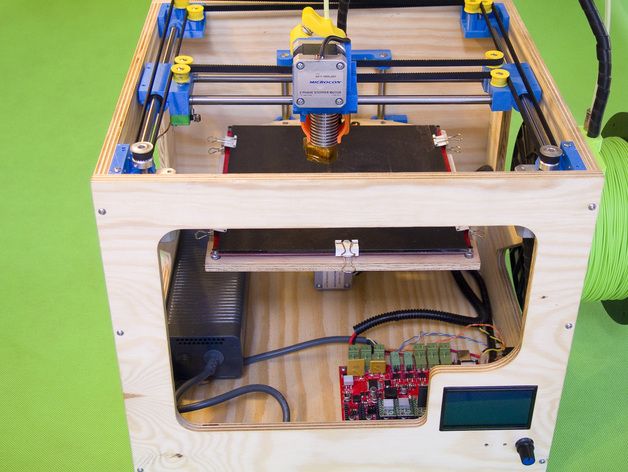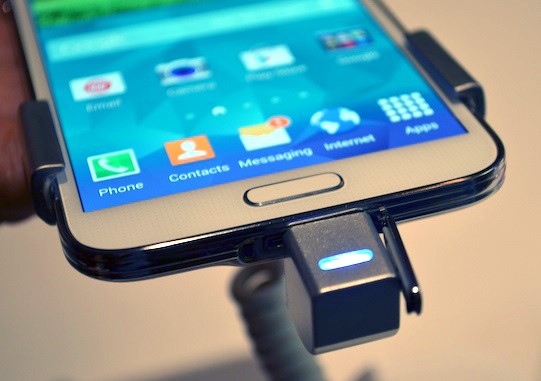Ghost gun 3d printer
Creality Ender 3 S1 Pro
$499.99
Ender 3 S1 Pro by Creality with 220 x 220 x 250 print volume, removable magnetic bed plate, and easy assembly (+/- 15 minutes). The heated bed warms up quickly and is compatible with all branded filaments. Thanks to the resume function, you can continue printing after, for example, power-loss. Popular software like Slic3r, Cura and Simplify 3D will work with this printer. The printer kit includes all parts and tools to assemble the 3D printer. There is a sample of filament included, but to start printing we recommend a spool of filament.
Features:
The brand new nozzle made of brass can stand up to 300°C printing temperature, and it is compatible with multiple filaments, such as PLA, ABS, PVA, Wood, TPU, PETG, and PA, providing more possibilities for creation.
Ender-3 S1 Pro has used the spring steel PEI magnetic build plate, which has good adhesion to the printed model and enables fast heating up of the heat bed. The build plates is not only durable but also flexible. Once the printing completes, users can remove the printed mdel effortlessly with just a slight bend.
The 4.3-inch touch screen, supporting 9 languages, offers efficient UI interaction and is easy to use. It will dim out automatically for energy-saving if there is no action for 3 minutes. The equipped LED light enables comprehensive light fill, with which users can observe the printing details even in a dark environment.
The “Sprite” full-metal dual-gear direct extruder with an extrusion force of 80N ensures smooth feeding when printing with different filaments, especially the flexible TPU.
Equipped with CR Touch, the 16-point automatic leveling can complete quickly with compensation for points’ printing height on the heat bed. Good efficiency saves much time.
Out of stock
Join the waitlist to be emailed when this product becomes available
Enter your email address to join the waitlist for this product
SKU: CREALITY-ENDER3-S1-PRO Categories: 3D Print, 3D Printers, Best Sellers
Note: your jurisdiction may require you to be a licensed FFL or licensed gunsmith to purchase this product.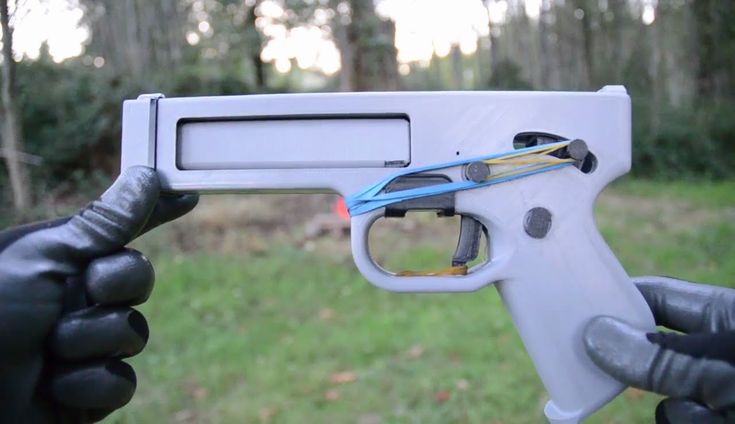
The kit includes the following items:
- Power cable
- Tie-wraps
- 20 Meters of PLA filament
- USB Drive
- Tools
Technical Specifications
Ender-3 FDM 3D Printer Properties
Modeling Technology: FDM(Fused Deposition Modeling)
Printing Size: 220x220x250mm
Filament: 1.75mm PLA, TPU, ABS, PA.
File Format: STL,OBJ,G-code
Ender-3 FDM 3D Printer Hardware
Machine Size: 475x470x620mm
Net Weight: 23lbs
Layer Thickness: 0.1-0.4mm
Nozzle Diameter: 0.4mm
Printing Accuracy: ±0.1mm
Nozzle Temperature: 300℃
Hotbed Temperature: 110℃
See also:
3D Printing Failures: 2022 Edition: How to Diagnose and Repair ALL Desktop 3D Printing Issues
$25.99Homemade gun used in Abe shooting fuels concerns over DIY weapons and 3D-printed ‘ghost guns’
The killing of former Japanese prime minister Shinzo Abe using a handmade gun has revived attention around firearms that can be assembled at home from individual parts, kits, or using 3D printers.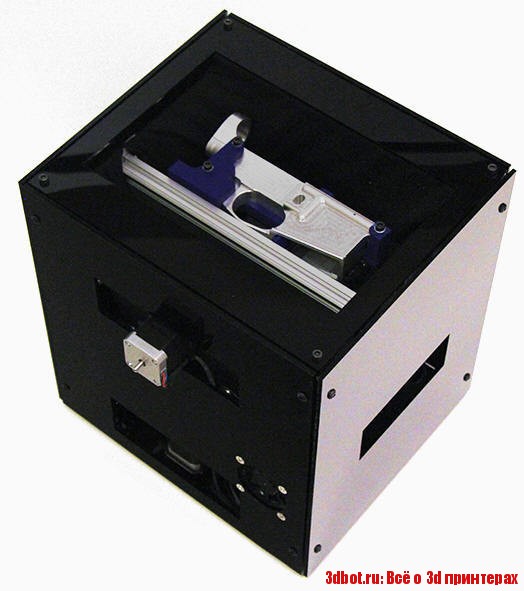
Video images showed the assailant fired at Abe on Friday with a device that had a pistol grip and what appeared to be two pipes covered in black electrical tape. Police arrested a 41-year-old man at the scene and said he had admitted to shooting Abe.
The gun measured 40 cm by 20 cm, and was made of materials such as metal and wood, local officials told reporters. Analysts say the suspect could have made the weapon in a day or two after obtaining readily available materials such as wood and metal pipes.
"The making of guns with a 3D printer and the manufacturing of bombs can nowadays be learned off the internet from anywhere in the world," said Mitsuru Fukuda, a Nihon University professor specialised in crisis management and terrorism who analysed images of the weapon used in Abe's shooting.
There have been several cases in recent years of people being arrested for illegally making firearms – typically with the help of 3D printers – not only in Japan but in other developed countries.
Untraceable homemade firearms are increasingly cropping up in deadly shootings across the United States, and the Biden administration pledged earlier this year to crack down on such unlicensed “ghost guns”.
In Europe, where gun control laws are much stricter than in the United States, the threat posed by unlicensed firearms is also a concern. Counter-terrorism experts say more should be done to curb their spread, and recent violent incidents suggest these weapons are of particular appeal to far-right extremists.
Halle shooting a wake-up call
On October 9, 2019, in the German city of Halle, a young Neo-Nazi wielding homemade firearms tried to storm a synagogue during the Jewish holiday of Yom Kippur. He failed to get in, but killed two bystanders and wounded two more.
The assailant live-streamed the attack, in what he described in a manifesto as a mission to fight “anti-White” people and test how the weapons he had assembled would work. Some of the guns he had were a mix of steel, aluminium, wood and 3D-printed components.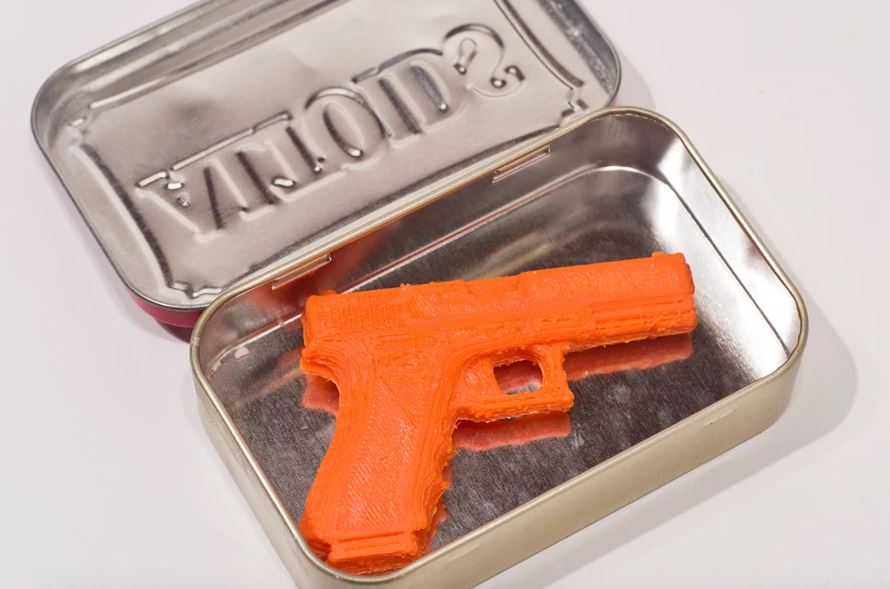
The attack forced Europe to a shocking reckoning over the threat of terrorism using homemade 3D-printed weapons.
Across most of the continent, people need a permit and a psychological evaluation before they’re allowed to possess a gun, and that is only if they can provide a reasonable justification as to why they need one.
But 3D printing has changed everything. Gun enthusiasts now only need access to the internet and less than €100 to build a plastic firearm that’s illegal, yet untraceable and able to pass unnoticed through a metal detector.
"Ghost guns" on display at the headquarters of the San Francisco Police Department, Nov. 27, 2019.AP Photo/Haven DaleyOld phenomenon, new tech
Homemade weapons have long been the last resort of insurgents, such as Polish resistants during World War II or Chechen rebels during the second Chechen war against Russia.
But 3D printing has given this old practice a modern twist.
“Creating 3D-printed weapons is a fairly new phenomenon. And that really has to do with the fact that 3D printed technology has become democratised in the last 15 years or so,” said Yannick Veilleux-Lepage, an assistant professor focusing on terrorism and political violence at Leiden University in the Netherlands.
And that really has to do with the fact that 3D printed technology has become democratised in the last 15 years or so,” said Yannick Veilleux-Lepage, an assistant professor focusing on terrorism and political violence at Leiden University in the Netherlands.
“It’s an old technology. It's existed since the 1980s, but before it was really used in very distinctive environments, like in manufacturing to do things like rapid prototyping,” he told Euronews Next.
Back then, 3D printing was only available to people working in specific industries or to researchers in universities. But between the early 2000s and 2010s, the cost of 3D technology went down and production was scaled up, leading to an explosion of 3D printing at home.
Most of it came without harmful intentions.
“But like most technologies, it has a dark side to it, and there is this subset of the 3D printing community that has become somewhat fixated on printing weapons,” said Veilleux-Lepage, who is also an associate fellow of the International Centre for Counter-Terrorism (ICCT).
Now, with the help of blueprints easily available online, pretty much anyone can build their own gun at home.
Veilleux-Lepage estimates it would take only 20 to 30 hours of trial and error to make a Liberator, the world’s first model of a 3D-printable handgun, whose blueprint was released by a young American gun rights activist in 2013.
Other designs for more elaborate weapons, which may require external, non-3D-printed components, might however require more money and energy, he said.
Far-right obsession
Stephan Balliet, the Halle synagogue shooter, was a neo-Nazi.
Since his attack, the UK has arrested four people for making and possessing 3D-printed guns, while Spanish police have dismantled an illegal workshop in Tenerife that was using 3D printers to produce guns. Both cases were found to also be linked to far-right movements.
In the Spanish workshop where they seized 3D-printed weapons - including a replica assault rifle and several gun barrels - police found manuals on urban guerrilla warfare and white supremacist literature.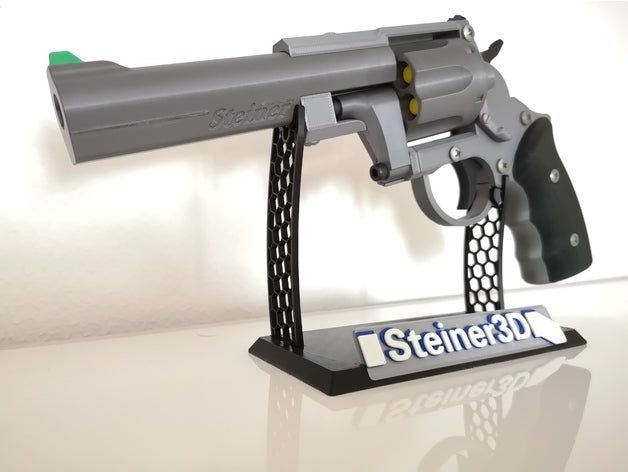
According to Veilleux-Lepage, this style of DIY weapons appeals to far-right movements who seek to act outside of the control of the governing elites and are fascinated with survivalism.
“There's certain places where this kind of aspect of creating your own weapon and being able to do so completely outside of the purview of government and this notion of self-sufficiency will also transpose quite well on to far-right ideology,” he said.
“Groups which are skeptical of government overreach, or skeptical of gun control, who are skeptical of having the means of production within the hands of a few elites".
A 9mm pistol build kit with a commercial slide and barrel with a polymer frame is displayed in the Rose Garden of the White House in Washington, Monday, April 11, 2022.AP Photo/Carolyn KasterWhat is Europe doing to fight 3D-printed guns?
The 3D printing of firearms by private individuals is illegal across Europe.
In theory, weapons can only be 3D-printed and manufactured by licensed dealers, and are subject to restrictions such as authorisation before private acquisition.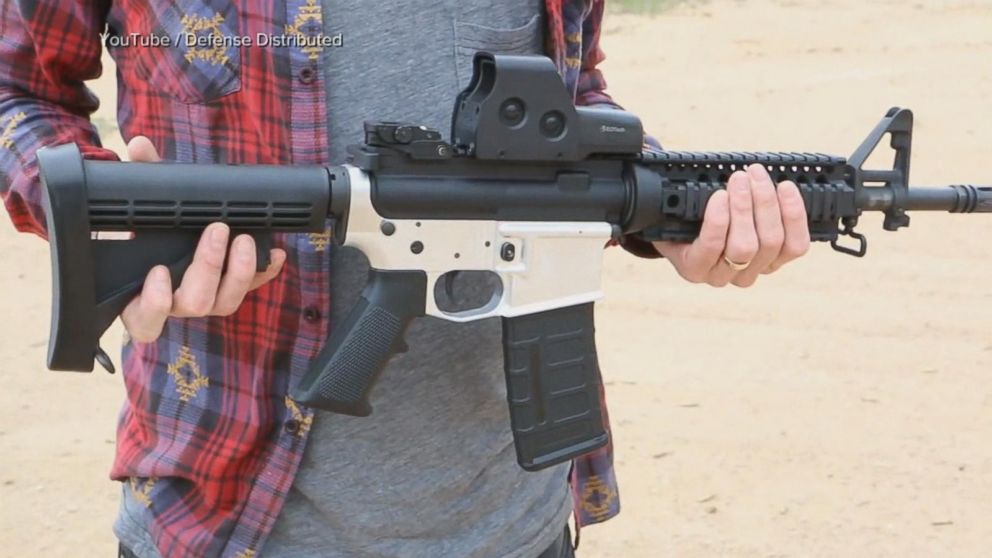
In reality, the threat posed by untraceable ghost guns is very much on the radar of European authorities, which are considering further steps to contain it.
It's about upping the bar... so that the angry 15-year-old who is being bullied in school can't go and print a 3D-printed gun in his bedroom
Yannick Veilleux-Lepage Associate fellow, International Centre for Counter-Terrorism
In 2018, before the deadly attack in Halle, EUROPOL had warned that technological progress would make 3D printing available to more people, and that this could boost the illicit production and trade of firearms across the continent.
In an October 2021 report to the EU Parliament and Council, the European Commission identified the most dangerous threat as the manufacturing of “so-called hybrid 3D-printing weapons, which rely on both 3D-printed parts and readily available components that are globally unregulated, such as steel tubing, metal bar stock, and springs”.
In that report, the Commission said it was assessing whether to make the ownership and sharing of blueprints for 3D-printed weapons illegal too.
The UK is also carefully following the situation.
“Criminals who use any type of firearm have clear intentions; to spread fear, incite violence and cause harm to our communities,” said Matt Perfect, head of the UK’s National Firearms Targeting Centre.
“The manufacture or possession of 3D printed weapons is covered under existing firearms legislation. We are closely monitoring the impact of 3D guns and their unique vulnerabilities, working closely with partners to suppress the availability of illegal firearms in the UK”.
Can 3D-printed 'ghost guns' be stopped?
Veilleux-Lepage expects to see an increase in the manufacturing and use of 3D-printed weapons in Europe and in the US, “just because that technology is existing and is being democratised and is easier to access now than it was 10 years ago”.
But he seriously doubts that 3D-printed guns could become the preferred weapon for terror attacks in Europe.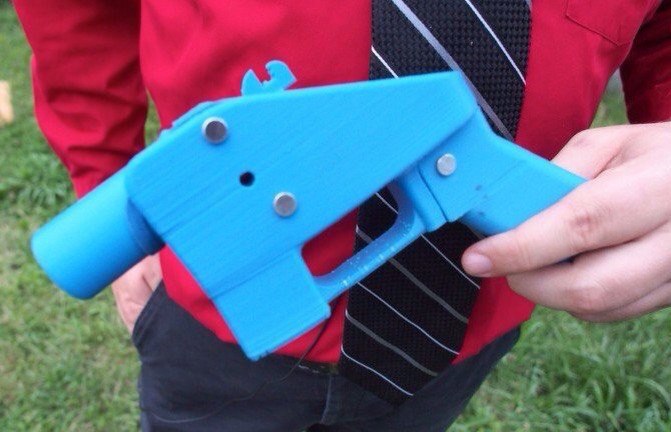
“If you look at the majority of terrorist incidents in the Western world that have used firearms, craft weapons are not generally preferred,” Veilleux-Lepage said.
“Particularly when you're looking at jihadists, what they have done is use decommissioned weapons like prop-guns - which are real firearms - which were deactivated and they have sought to reactivate,” he added.
As much as 3D-printing a weapon allows people to easily bypass permitting and licensing, it’s certainly not the most immediate method of obtaining a gun, especially as not everyone might be familiar with 3D printing.
“There are more reliable ways to obtain firearms,” said Veilleux-Lepage.
He also believes some practical solutions could help fight the spread of 3D-printed weapons.
Social media giants Instagram, Facebook and TikTok could for instance agree that sharing information on how to build 3D-printed weapons violates their terms of service, he said.
Technology like the one applied on banknotes, which nullifies attempts at photocopying money, could also be implemented on the blueprints of 3D-printed weapons.
“Now that doesn't mean that nobody is going to be able to overcome this. Some people will be,” Veilleux-Lepage cautioned.
“But it's about upping the bar, making it harder, making it so that, you know, the angry 15-year-old who is being bullied in school can't go and print a 3D-printed gun in his bedroom because he's angry”.
STL File Rubber Gun WW3D 1911R・3D Print Design Download・Cults
Rubber gun XDSR
5.05 €
G17R Rubber Band Gun
5.17 €
M17R Rubberband Gun
5.12 €
Mandalorian Rubberband Gun
5.13 €
Print in Place Rubber Band Gun
2.05 €
Castle for interlocking brick figures
1. 03 €
03 €
Castle Business Card Holder
2.56 €
Cottage for interlocking brick figures.
1.03 €
Best 3D Printer Files in the Miscellaneous Category
ROBOT GIRU DRAGON BALL GT
0,78 €
EDC Flashlights Holder for Glasses
Free
Sloppy Hungover Unicorn grumpy cute funny sculpture
8 €
Minion bong nozzle, Sisha mouth tip minion
1,87 €
Jumpman Silhouette Keychain
Free
Valentine's Day LOVE reminder / keychain
2,50 €
flight board support for Nicotplast floor
2 €
Red Chin
6 €
Bestsellers in Miscellaneous category
flexible volute
2 €
Charizard - pokemon with flexible articulation (seal in place, without supports)
3 €
Articulated Dragon Claws 2.
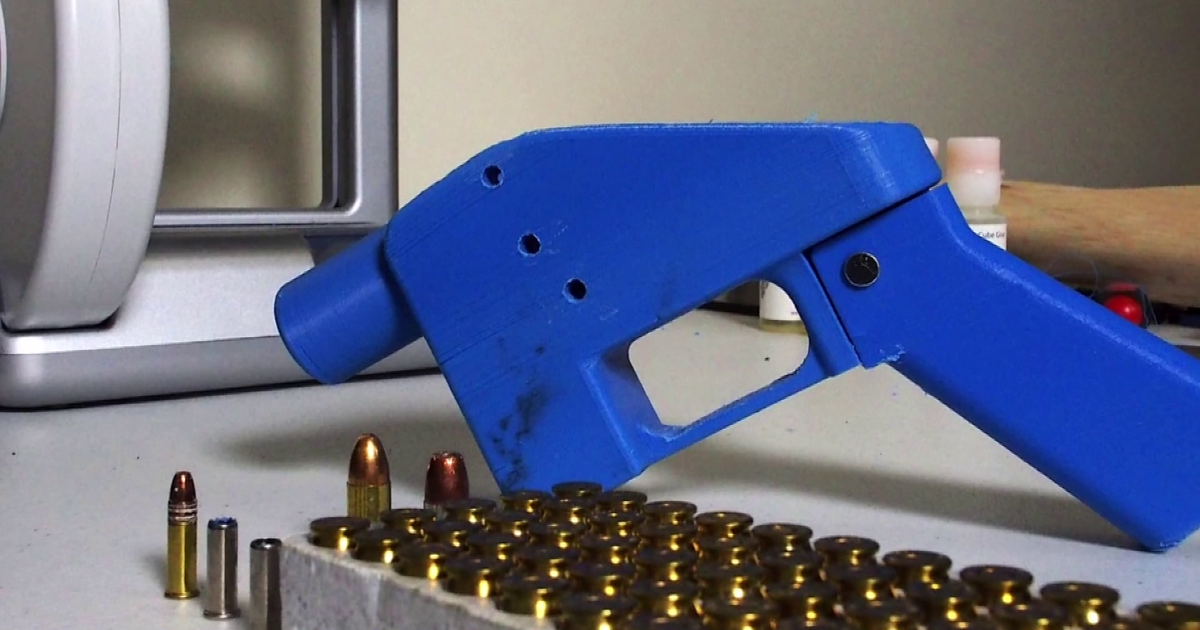 0 UPDATE.
0 UPDATE. €7.17
Christmas house
6.86 €
Polestar 2 cup holder
5.84 €
Adderini - 3D printed repeating slingbow / crossbow pistol
6.25€
RS-X-Bow "Government - 1911" style
6.25 €
Articulated Gyarados
1.99 €
Halloween pumpkin lantern ItsLitho
1,90 €
Black Phone Movie Invader 2 Piece Mask 3 Style Frowning Smile No Mouth STL
€10.25
Targaryen Crown - Viserys - Dragon House
9.95 €
Mickey Christmas night light Litophane
3,50 €
ItsLitho "Pure" personalized lithophane Christmas ball
1,90 €
Ciberpunk 2077 Gun Rebecca "Guts"
4 €
Gremlin rail 640 mm FPV
1. 03 €
03 €
Key holder for middle finger
1 €
Do you want to support Cults?
Do you like Cults and want to help us continue our journey on our own ? Please note that we are a small team of 3 people, so support us in maintaining the activities of and creating future developments is very simple. Here are 4 solutions available to everyone:
-
AD: Disable your AdBlock banner blocker and click on our banner ads.
-
AFFILIATION: Shop online with our affiliate links here Amazon.
-
DONATIONS: If you want, you can donate via PayPal here.
-
* INVITE FRIENDS: * Invite your friends, discover the platform and great 3D files shared by the community!
Is it possible to print airguns and firearms
Is it possible to make a gun on a 3D printer and is it legal?
Today's 3D printers offer a lot of possibilities.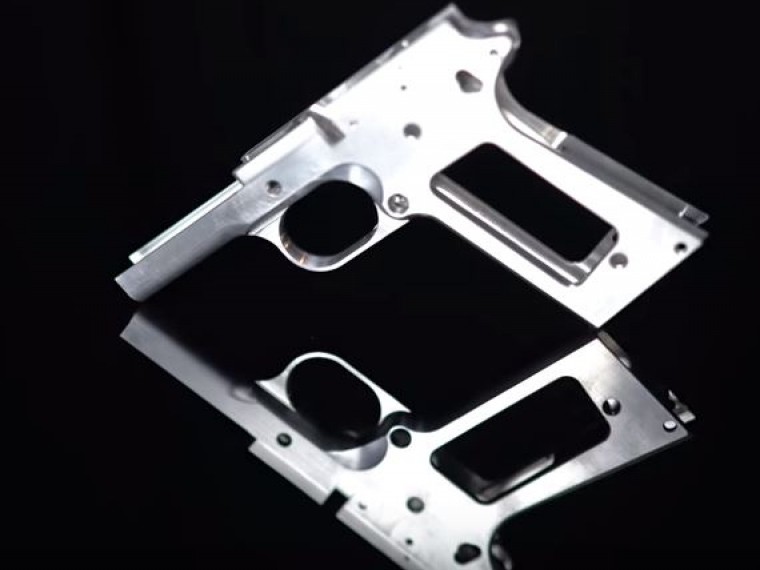 They can print products of almost any complexity. Until quite recently, it was difficult to even imagine that a plastic weapon could shoot. However, it is already possible to make a pistol on a 3D printer, which, although not reliable, still fires live ammunition.
They can print products of almost any complexity. Until quite recently, it was difficult to even imagine that a plastic weapon could shoot. However, it is already possible to make a pistol on a 3D printer, which, although not reliable, still fires live ammunition.
Can firearms be 3D printed?
Back in 2013, a young American activist for the free sale and distribution of weapons proved that plastic weapons can be printed on a 3D printer. He was the first in the world to make a pistol in this way, in which only the striker was made separately from metal. All other parts were printed on an FDM printer.
Today's 3D printers are capable of printing any CAD model, and these models of firearms have been available for over 10 years. If in previous years their printing required professional skills, now almost any user can master them. With a 3D printer and a finished model, it became quite possible to print a gun. Another thing is that such "creativity" is punishable by the laws of most countries.
The evolution of 3D printed weapons
Despite all the prohibitions and restrictions, the evolution of 3D printed firearms is moving at a great speed. The beginning was laid by the single-shot plastic pistol Liberator by American K. Wilson, which appeared in 2013. It had a simple design and was chambered for 380 ACP. Already after 10-12 shots, this weapon became unusable. However, the very possibility of printing firearms served as an impetus for the development of the idea. The author of the first pistol himself founded the Defense Distributed company, which began to actively improve the technology.
One of the ways to increase the durability of weapons was to increase the number of their barrels. At the beginning of 2014, the Japanese Y. Imura makes a 38 caliber Zig Zag pistol. He was able to fire up to 6 shots non-stop. The author of the weapon was recognized as a criminal and convicted.
The next step was the production of a six-shot revolver by J. Patrick in 2015. The PM522 Washbear has been shown in action on YouTube. The weapon was noticeably safer for the shooter compared to previous versions, but still allowed to fire only a few dozen rounds.
Patrick in 2015. The PM522 Washbear has been shown in action on YouTube. The weapon was noticeably safer for the shooter compared to previous versions, but still allowed to fire only a few dozen rounds.
The first 9mm semi-automatic pistol appeared in 2016 under the name Shuty-MP1. It was developed by a handicraft gunsmith who hid under the pseudonym Derwood. It wasn't exactly a plastic weapon. The author used some metal parts from factory pistols - a barrel, a firing pin, a bolt and several springs. This made it possible to ensure a rate of fire of more than 46 rounds / min. However, when changing the store, the plastic case had to be cooled. In 2017, the same master proposed an improved model - Shuty AP-9.
The main contribution to the development of 3D printed weapons technology was made by Defense Distributed, which brought together a group of like-minded activists. First, these enthusiasts won legal proceedings in the United States and obtained permission to 3D-print weapons, which greatly expanded their capabilities.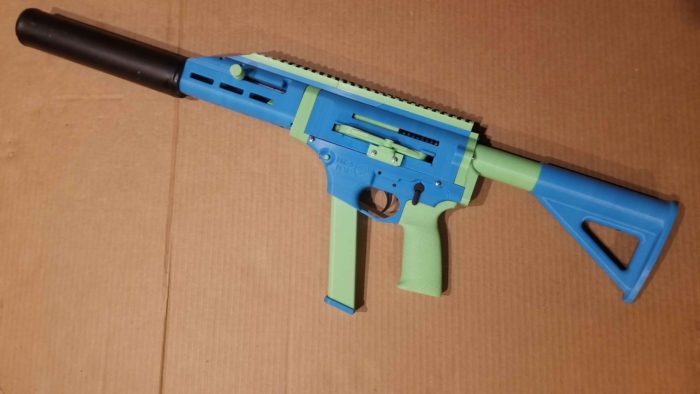 Secondly, they were able to set up a professional business with product testing and quality control. As a result, in 2018–19 they developed numerous models of a variety of firearms - from pistols to carbines. They posted over 30 files for printing original gun parts. Most of them were plastic, and the metal parts were not made from purchased, ready-made elements, but from simple metal profiles (tubes, strips, etc.), which are sold in ordinary hardware stores. This made it possible to exclude the use of parts patented by gunsmiths.
Secondly, they were able to set up a professional business with product testing and quality control. As a result, in 2018–19 they developed numerous models of a variety of firearms - from pistols to carbines. They posted over 30 files for printing original gun parts. Most of them were plastic, and the metal parts were not made from purchased, ready-made elements, but from simple metal profiles (tubes, strips, etc.), which are sold in ordinary hardware stores. This made it possible to exclude the use of parts patented by gunsmiths.
At the moment, the semi-automatic carbine FGC-9, developed on the basis of the Shuty AP-9, has become the pinnacle of "creativity" of Defense Distributed. At the same time, there is not a single factory part in it. The barrel for the 9 mm cartridge is made of steel pipe using electrochemical processing.
Where can I get drawings and what should I look for?
Gun manufacturing bans make it much more difficult to access blueprints and models of guns for 3D printing. The right to free placement of information was achieved only by Defense Distributed. Their website provides free access to drawings, models and technologies. Other information can be found on the Internet, but they are usually illegal.
The right to free placement of information was achieved only by Defense Distributed. Their website provides free access to drawings, models and technologies. Other information can be found on the Internet, but they are usually illegal.
When choosing a model, pay attention to the following information:
- material used;
- cartridge for which the model is designed;
- number of cartridges in the magazine, rate of fire;
- operating time before failure.
It is important to clarify which metal parts will need to be purchased separately, in addition to plastic for printing on a printer.
What does the law say in different countries?
The only country where firearms can be 3D printed is the United States. Gun Control Act 19 applies here68, giving Americans the right to make weapons, but only for personal use. Only one limitation is put forward: it must be determined by metal detectors, that is, it must have a metal element.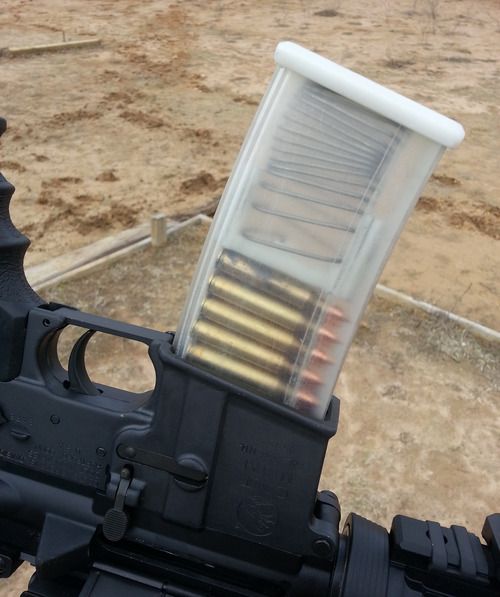 In virtually all other countries, homemade manufacture and repair of weapons for any purpose is prohibited by law. In Russia, printing it on a 3D printer falls under the Criminal Code of the Russian Federation and is punishable by imprisonment.
In virtually all other countries, homemade manufacture and repair of weapons for any purpose is prohibited by law. In Russia, printing it on a 3D printer falls under the Criminal Code of the Russian Federation and is punishable by imprisonment.
Should we be afraid of plastic weapons?
The question of how dangerous a weapon printed on a printer is becoming increasingly important. Despite all the prohibitions, it is extremely difficult to control the spread of technology around the world. The availability of 3D printers and the increase in their functionality make it possible to master the production of plastic guns at home. How dangerous is such a weapon?
Most experts agree that currently printed weapons are more of an interesting toy. It is quite expensive and is designed to carry out only a few dozen shots. Moreover, such pistols are quite dangerous for the shooter himself with live ammunition, because they can explode in their hands.
However, the danger cannot be underestimated.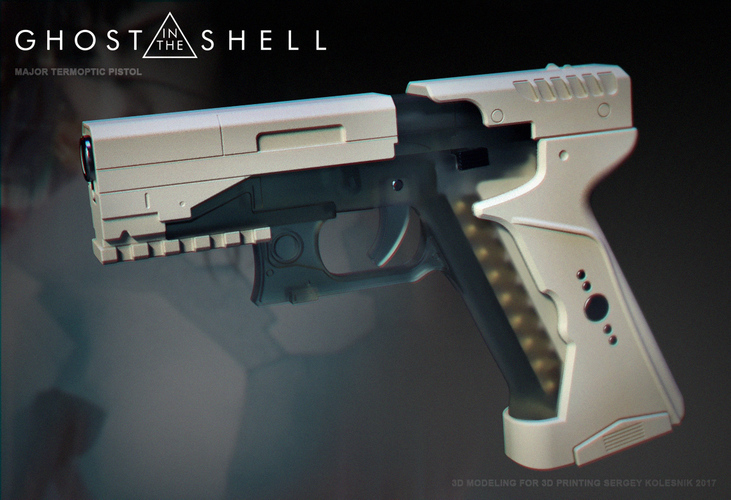 It is easier and cheaper for a "serious" criminal to buy illegal military weapons than to make them on a printer. At the same time, there may be "enthusiasts" who, for their own interest, can make a pistol and try it out in action. Such inadequate people represent an undoubted danger. In addition, the temptation is great for terrorists. Metal detectors do not detect a plastic gun, which means that it is easier to carry it, for example, on an airplane.
It is easier and cheaper for a "serious" criminal to buy illegal military weapons than to make them on a printer. At the same time, there may be "enthusiasts" who, for their own interest, can make a pistol and try it out in action. Such inadequate people represent an undoubted danger. In addition, the temptation is great for terrorists. Metal detectors do not detect a plastic gun, which means that it is easier to carry it, for example, on an airplane.
Important! Plastic weapons have a very small resource. At the same time, sometimes just one shot is enough to kill a person.
3D printed firearms have the following advantages:
- the ability to make military weapons at home;
- light weight;
- availability of materials;
- Ability to copy famous weapon models.
Always remember that there are significant disadvantages:
- illegal manufacture;
- high cost of weapons;
- very small resource and limited rate of fire;
- danger to the shooter himself.
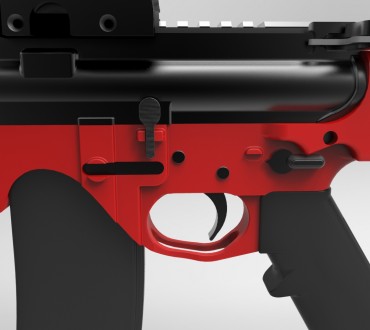
Currently, plastic weapons have more disadvantages than advantages, and most importantly, you can get a real prison term for making them.
Prospects for printing weapons
The potential for 3D printing of firearms is far from exhausted. The expansion of equipment capabilities and the development of innovative materials indicate that in the near future such weapons may approach military weapons in terms of characteristics. In the future - a significant increase in the resource and the provision of automatic firing.
Significantly improves the reliability of printed pistols and carbines SLS technology using metal powder. Such weapons already differ little from the factory metal models. While it is very expensive, which significantly limits the application. However, over time, the material will become cheaper, which means it will become more affordable.
Printing firearms on a 3D printer has become a reality. Despite its extremely low performance and reliability, interest is growing in it.